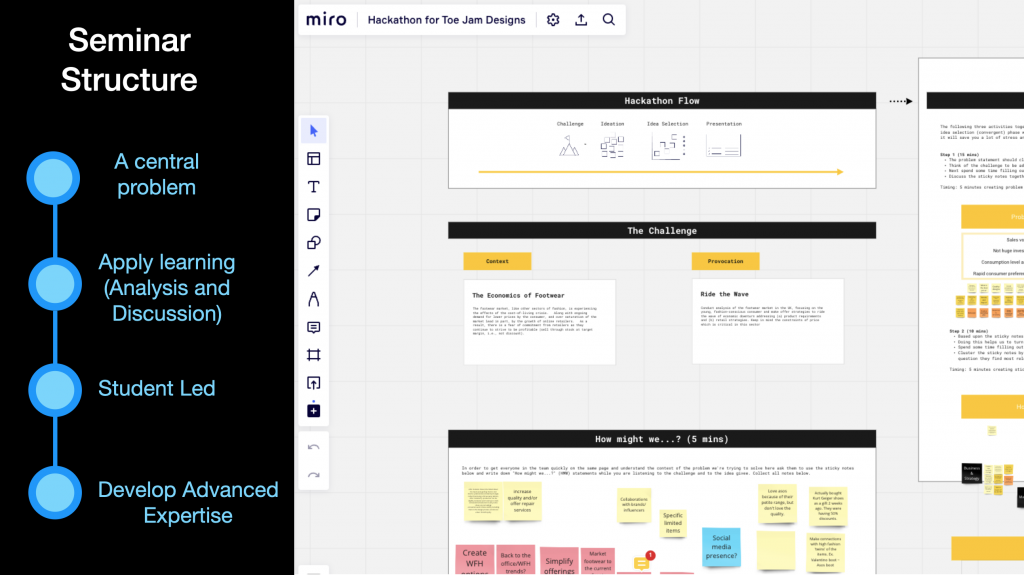When we set out to design these courses, we began with a central challenge:
How do we implement journeys of deliberate practice in an online environment?
Deliberate practice is the idea that the development of expertise requires intensive iterative cycles of learning, practice, and feedback that become increasingly complex. These journeys are intellectually demanding, and students can only succeed when supported by a structure that fosters sustained motivation and builds self-efficacy. Translating this into an effective online experience was our central design challenge.

To tackle this, we worked at the intersection of three key domains:
- Subject Expertise & Science of Learning: We explored how experts actually become experts—how they think, practise, and improve over time.
- Subject Expertise & Digital Technologies: We designed real-world, authentic scenarios where learners could apply theory in meaningful contexts.
- Science of Learning & Digital Technologies: We built interactive, feedback-rich environments that support diverse learner journeys. We invested in the design of our Moodle course sites to ensure clarity, consistency, and ease of navigation reducing cognitive load and supporting learner autonomy.
At the very centre of this model lies our core design principle: deliberate practice. Every component of the course was crafted to challenge learners just beyond their current ability, supporting progress through structured guidance and feedback.
The Digital Campus
Belonging in the Digital Campus
Online learning is not just about delivering content—it’s about creating a space where learners feel they belong so they can develop motivation and self-efficacy.
Our integration of the course website with Microsoft Teams formed a digital campus: a space where students could meet, share ideas, and support one another. We began by fostering community—not simply through instructor presence, but by encouraging meaningful interaction among peers.
This foundation allowed a genuine sense of belonging to develop. Students began to see themselves not just as individuals completing tasks, but as part of a purposeful learning journey. Motivation and engagement flowed naturally from that sense of connection.
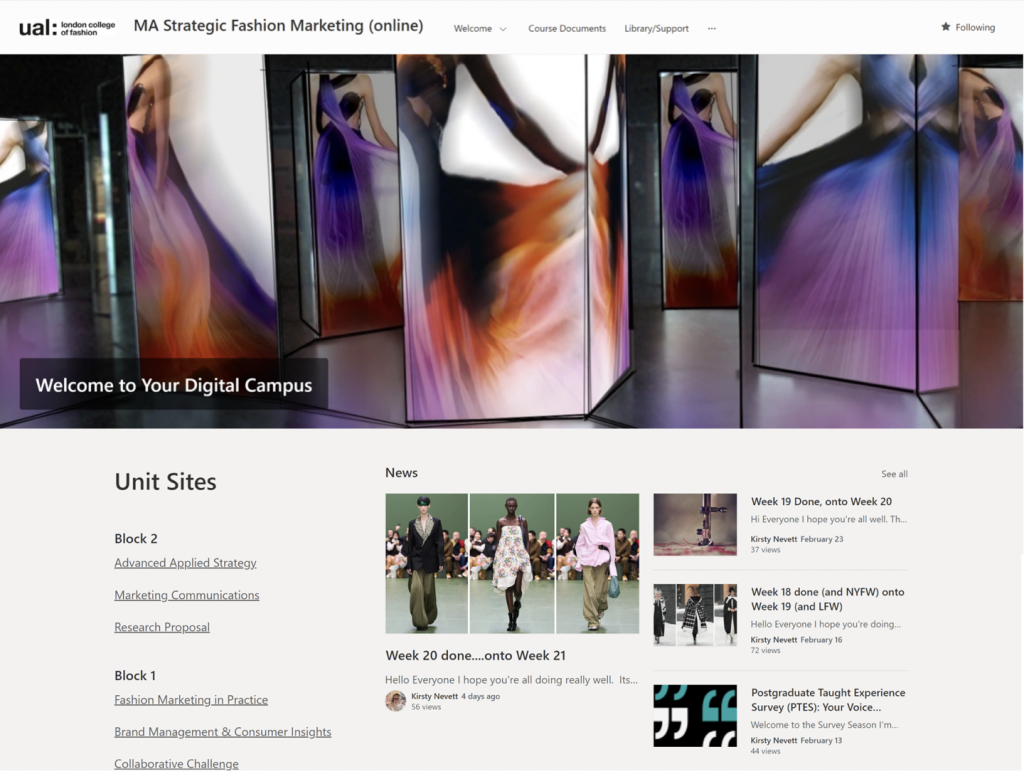

The Weekly Newsletter: A Human Touch
One of the most effective tools for supporting this human connection was the weekly newsletter.
Written in an informal, reflective tone, it acknowledged challenges, celebrated progress, and provided a bridge between weeks. It helped learners feel seen and supported.
Just as importantly, the newsletter looked forward. It highlighted upcoming content, shared relevant industry stories, and linked learning activities to broader goals. In doing so, it reinforced learners’ sense of purpose and direction.
Amplifying Voices and Social Moments
To strengthen social connection and provide expert insight, we added a series of short podcasts recorded by academic staff. These gave learners access to expert perspectives in an informal, conversational format.
We also hosted online social events—informal spaces where learners could connect beyond course content. These low-pressure gatherings played a key role in building rapport and sustaining engagement.
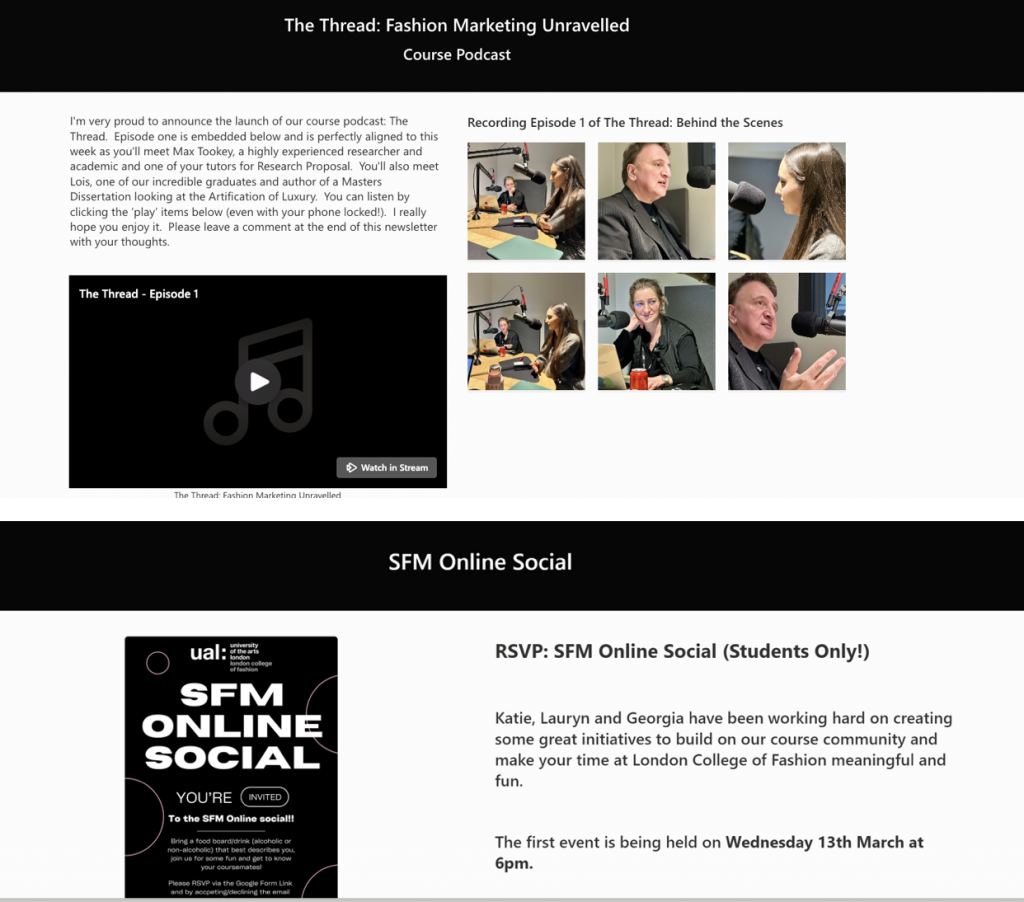
Designing Digital Spaces to Enhance Learning
Structuring the Learning Environment
Each course unit was designed to offer a coherent, navigable experience. Using a custom format in Moodle, we structured the learning space as follows:
A top banner that visually anchored the unit’s identity.
A welcome layer providing essential resources and assessment guidance.
A visual grid of weekly sections, each representing a stage in the learning journey.
This structure provided clarity and consistency, enabling learners to approach the course with confidence.

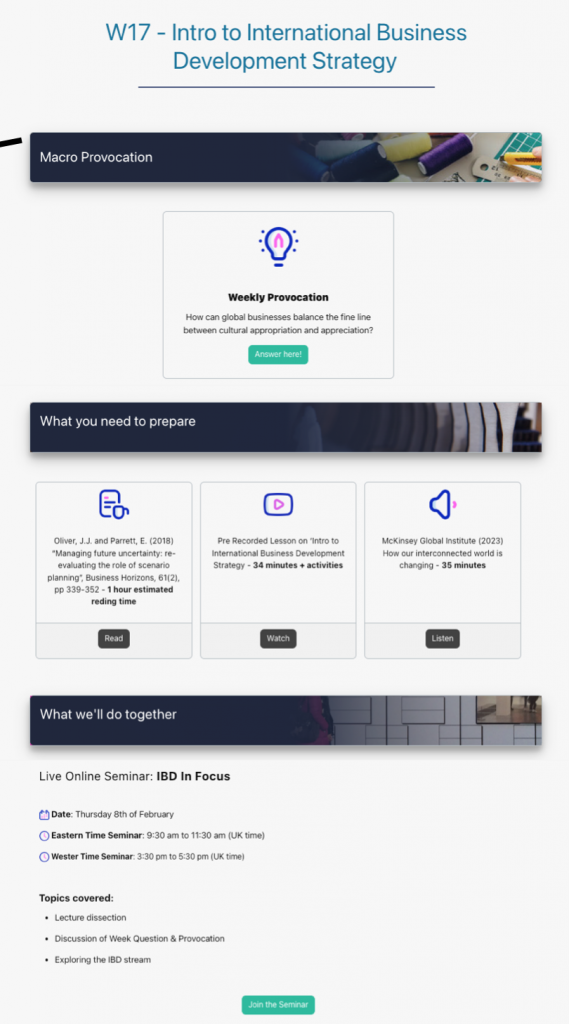
The Weekly Learning Arc
Each week followed a consistent rhythm, divided into three sections that guided learners through preparation, engagement, and collaboration:
Macro Provocation: A bold, open-ended question or scenario that sparks critical thinking and discussion in the forums.
What You Need to Prepare: A curated blend of asynchronous materials—a key reading, an interactive online lesson, and a podcast—all scaffolded to support concept acquisition and active engagement.
What We’ll Do Together: Clear guidance for the upcoming live seminar, including goals and preparation tasks.
We invested in web design to ensure this flow was intuitive, clear, and motivating—lowering cognitive load and enhancing user experience.
The Online Lesson
Scaffolding Engagement
Each online lesson began with a carefully structured introduction:
- A short, welcoming introductory text framed the topic.
- A matching activity aligned lesson aims with overall unit outcomes.
- A short video introduced the week’s theme and relevance.
- An active engagement task prompted learners to begin constructing a mental model of the topic.
This introduction set the tone for deeper engagement and allowed learners to situate their work in context.
The images below show some examples of these elements
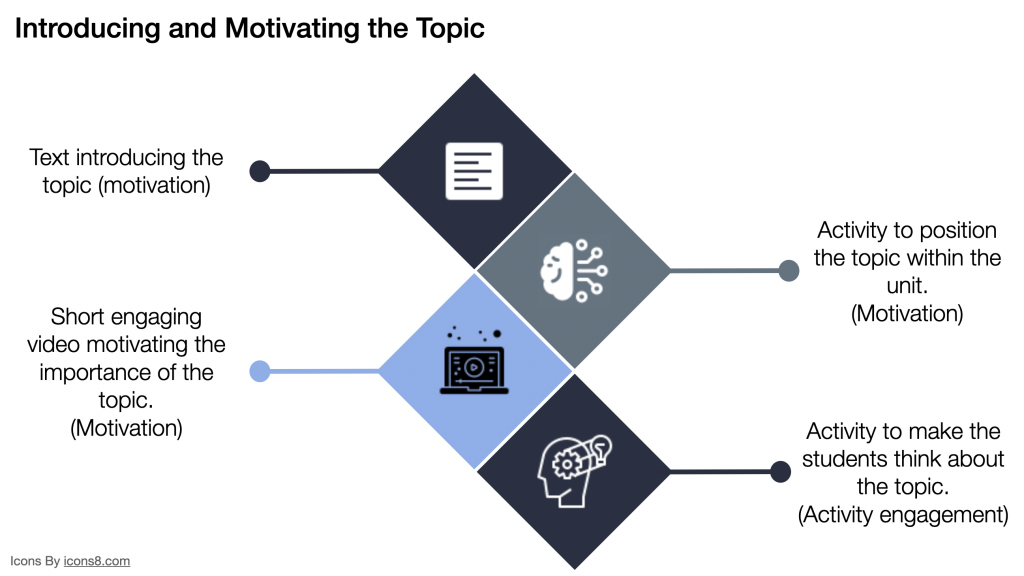

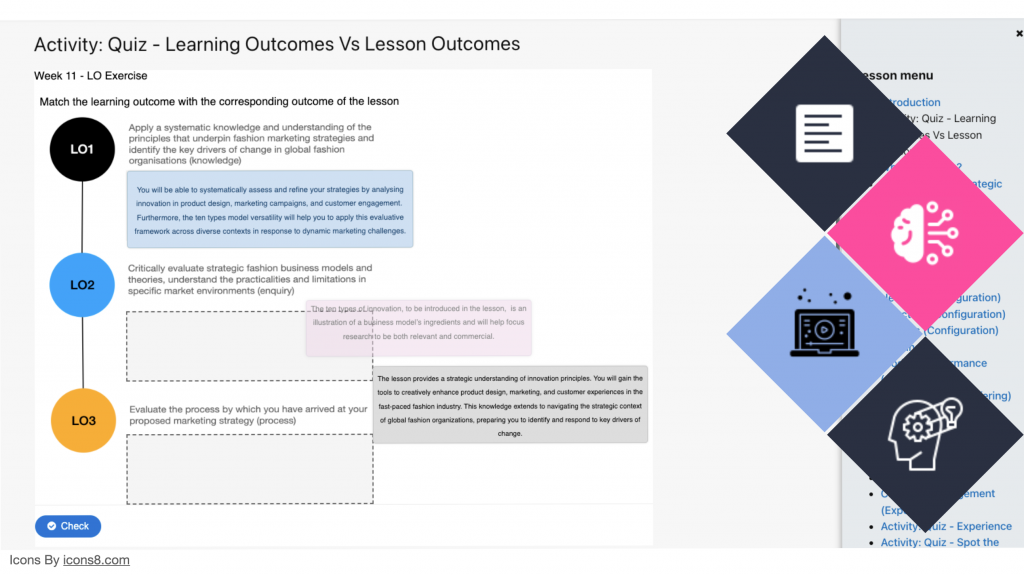
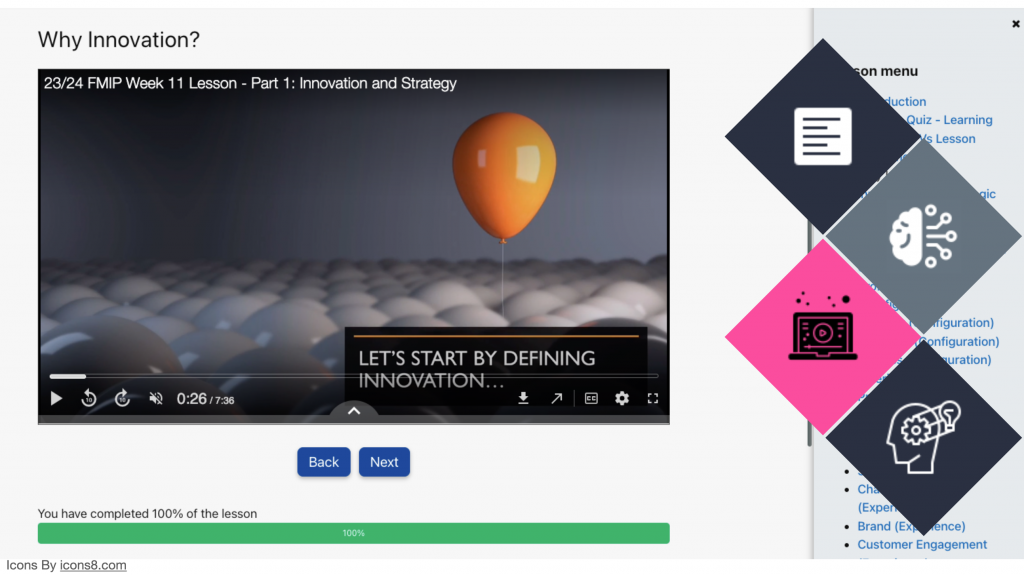
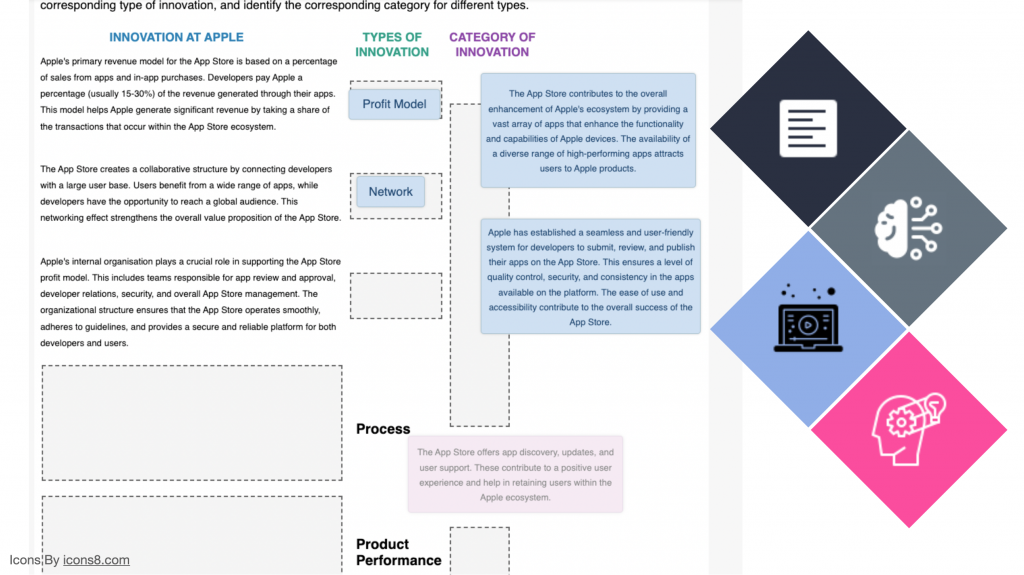
Interactive Learning and Feedback Cycles
Following the introduction, each lesson unfolded through multiple cycles of learning, practice, and feedback:
A short video introduced the concept in an accessible way.
A detailed explanation with structured text and examples developed the idea further.
Practice activities invited learners to apply their understanding.
Immediate feedback supported the identification and correction of misconceptions.
These cycles were deliberately sequenced to maintain engagement, support reflection, and promote mastery through iteration.
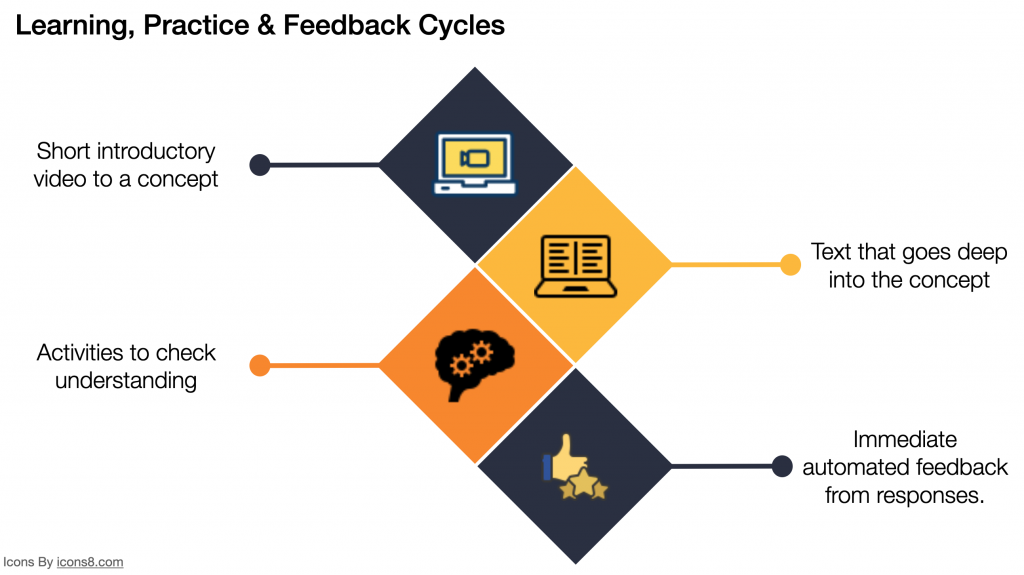

Visual Flow and Orientation
The lesson structure was visually mirrored in the lesson menu, helping learners track their progress and stay oriented.
Well-designed videos, interactive tasks, and feedback tools combined to create a flow that was clear, accessible, and aligned with principles of cognitive and motivational science.
From Knowledge to Expertise: Live Seminars
In the live seminars, learners moved from operational understanding to disciplinary expertise.
Each session centred on a challenging, real-world problem. Students worked collaboratively to analyse, debate, and apply their learning.
The seminars were student-led, supporting peer learning and the development of professional dispositions. In this space, learners began to adopt the practices and mindsets of their field.
